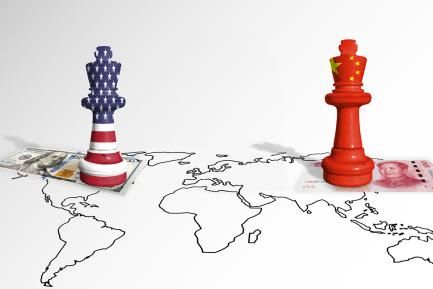China: slowly but surely
The Chinese economy has gone from growing at an annual rate of around 10% to slightly below 8%. Although this is still a high figure, the mere loss of the double digit together with the weakness of indicators towards the end of the second quarter and the recent restrictive shift in credit policy have reawakened fears of a hard landing for the Asian giant. To what extent are these fears well-founded?
The country's recent economic success has been based on exploiting the competitive advantages provided by a large workforce, magnified by an economic policy clearly biased towards investment/exports. However, all the evidence seems to suggest that both this policy and the model it defended have now run their course. Present-day factors apart, the structural slowdown in China's economy can be attributed to three key factors: (1) the government's desire to encourage more balanced growth, with a greater proportion of domestic consumption
(gradually dismantling stimuli for exports and introducing reforms to boost domestic spending);
(2) the natural slowdown due to the «catch-up» effect of an economy that is increasingly less distant from
its advanced peers; and (3) a country that is facing a demographic standstill due to the single child policy introduced in 1979.
To provide an initial estimate of how such trends will affect economic growth, we will decompose this growth rate into its main driving forces (growth accounting procedure): rising employment, accumulation of physical and human capital and technological changes (or productivity).(1) Starting with productivity, although we don't believe the 4 p.p. ceiling of the 1990s will be repeated, we still predict a significant contribution to growth (of around 2.8 p.p. on average between 2013-2020), boosted by the agricultural workforce moving to sectors with higher value added and by the structural reforms already underway or announced, that are pushing the country towards a «more market» economy.(2)
Regarding the accumulation of human capital (with a university enrolment rate that is still far behind its most advanced Asian neighbours), there is still a lot of room to improve as this could more than double its contribution to growth, up to 1.2 p.p. With regard to the accumulation of physical capital, although this will tend to lose steam both due to the catch-up effect and also to the deliberate change in model, it will continue to make a significant contribution to growth: assuming investment grows by 7% (14% in 2000), its contribution would be around 3.1 p.p.
Lastly, the employment trend is the one that is looking the most adverse for growth, although its impact is expected to be limited (–0.1 p.p.). On the one hand, the lassitude with which the single child policy was applied in the 1980s and 1990s augurs a very gradual impact; on the other, this reduction in the workforce will be alleviated by the gradual flexibilisation of worker mobility, helping the population to move from rural to urban areas. Consequently, we place the economy's average growth closer to 7% than 10% over the coming years.
In short, in spite of the uncertainty generated by the economic slowdown in the short term, the Chinese government appears to be determined to move towards a less distorted and more sustainable model: a process that does not need to be traumatic if carried out gradually and with a series of key reforms to maintain reasonable growth rates. These include: changes towards a more market-oriented economy to encourage productivity; educational improvements to boost human capital; facilitating the move from the countryside to the cities; strengthening social protection to promote consumption; and minimising financial risks. The gradual nature of this process, both
in terms of withdrawing the stimuli implemented since 2008 and also in dismantling the levers associated with the previous model, is also essential to halt risks in the short term and give the reforms time to bear fruit.
(1) See «El crecimiento de China: ¿de qué fuentes bebe el gigante asiático?», Documentos de Economía "la Caixa", July 2010.
(2) Of note are the reform of the financial system and greater liberalisation of the capital markets, flexibilisation of the exchange rate and reform of the hukou registration system.



